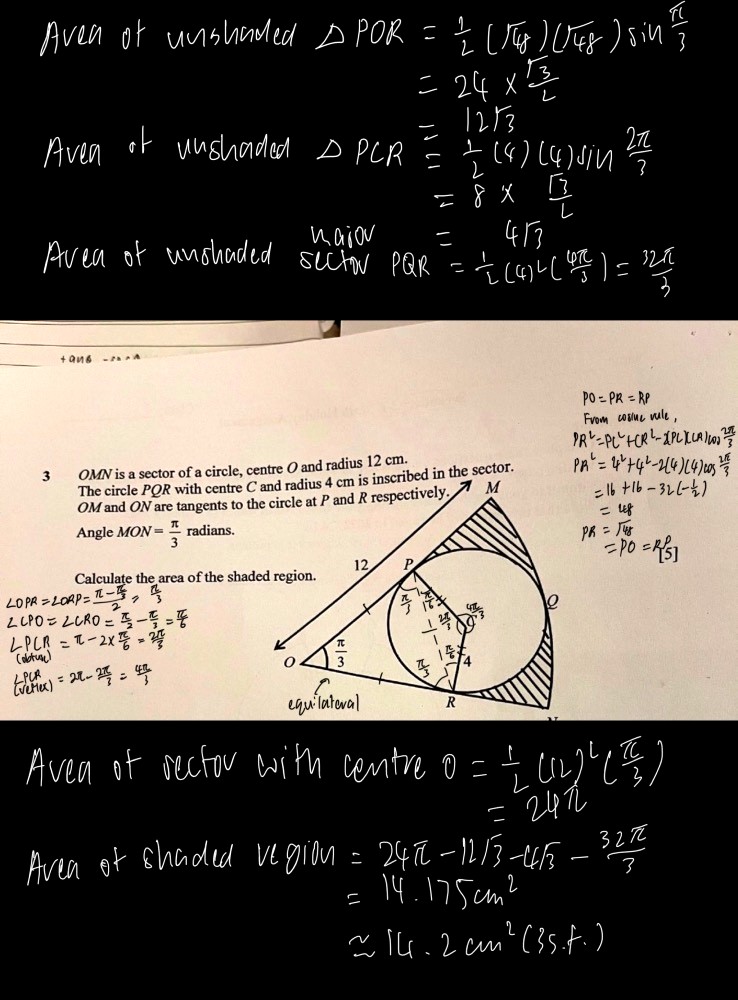Ask Singapore Homework?
Upload a photo of a Singapore homework and someone will email you the solution for free.

Question
secondary 3 | E Maths
One Answer Below
Anyone can contribute an answer, even non-tutors.

hello pls help !!!
The unshaded area is made up of a complete circle PQR and one other portion outside the circle.
To calculate this other portion, we subtract away the area of the minor sector PCR from the quadrilateral OPCR.
Because OM and ON are tangents to the circle PQR, angles OPC and ORC are both equal to π/2 radians (i.e. the radian equivalent of 90°).
[The circle property used here is "the tangent passing through a circle is perpendicular to the radius at the tangential point"; if you are a Sec 3 student as of 2022 (as per the title), you might not have learnt this yet]
The sum of angles in a typical quadrilateral is 2π radians (i.e. the radian equivalent of 360°).
So, angle PCR
= Sum of angles of quadrilateral - angle OPC - angle ORC - angle POR
= 2π - π/2 - π/2 - π/3
= 2π/3 radians
Area of minor sector PCR
= "1/2 times r² times θ"
= 1/2 times 4² times 2π/3
= 16π/3 cm²
[this is 16.75516082 cm²]
If you draw a line OC, doesn't it just cut the quadrilateral into two identical right-angled triangles?
Yes, it does.
[This is also another circle property which you will learn in Sec 3 or Sec 4 if you have yet to do so]
Let's now focus on triangle OPC. We will attempt to find length OP by considering the right-angled triangle OPC.
Angle POC = π/6 (because we split angle POR into two equal angles)
tan POC = PC/PO
tan π/6 = 4/PO
PO = 4 / tan (π/6)
[this is 6.92820323 cm]
Area of triangle POC
= 1/2 x PO x PC
= 1/2 x [4 / tan (π/6)] x 4
= 8 / tan (π/6)
[this is 13.85640646 cm²]
Area of quadrilateral OPCR
= 2 x 8 / tan (π/6)
= 16 / tan (π/6)
[ this is 27.71281292 cm²]
So, area of "the other portion"
= 16 / tan (π/6) - 16π/3
= 27.71281292 - 16.75516082
= 10.9576521 cm²
= "1/2 times r² times θ"
= 1/2 times 12² times π/3
= 24π cm²
[this is 75.39822369 cm²]
Area of circle PQR
= π (4)²
= 16π cm²
[this is 50.26548246 cm²]
So, the total area of the shaded regions
= 75.39822369 - 50.26548246 - 10.9576521
= 14.17508913 cm²
~ 14.2 cm²
See 1 Answer





